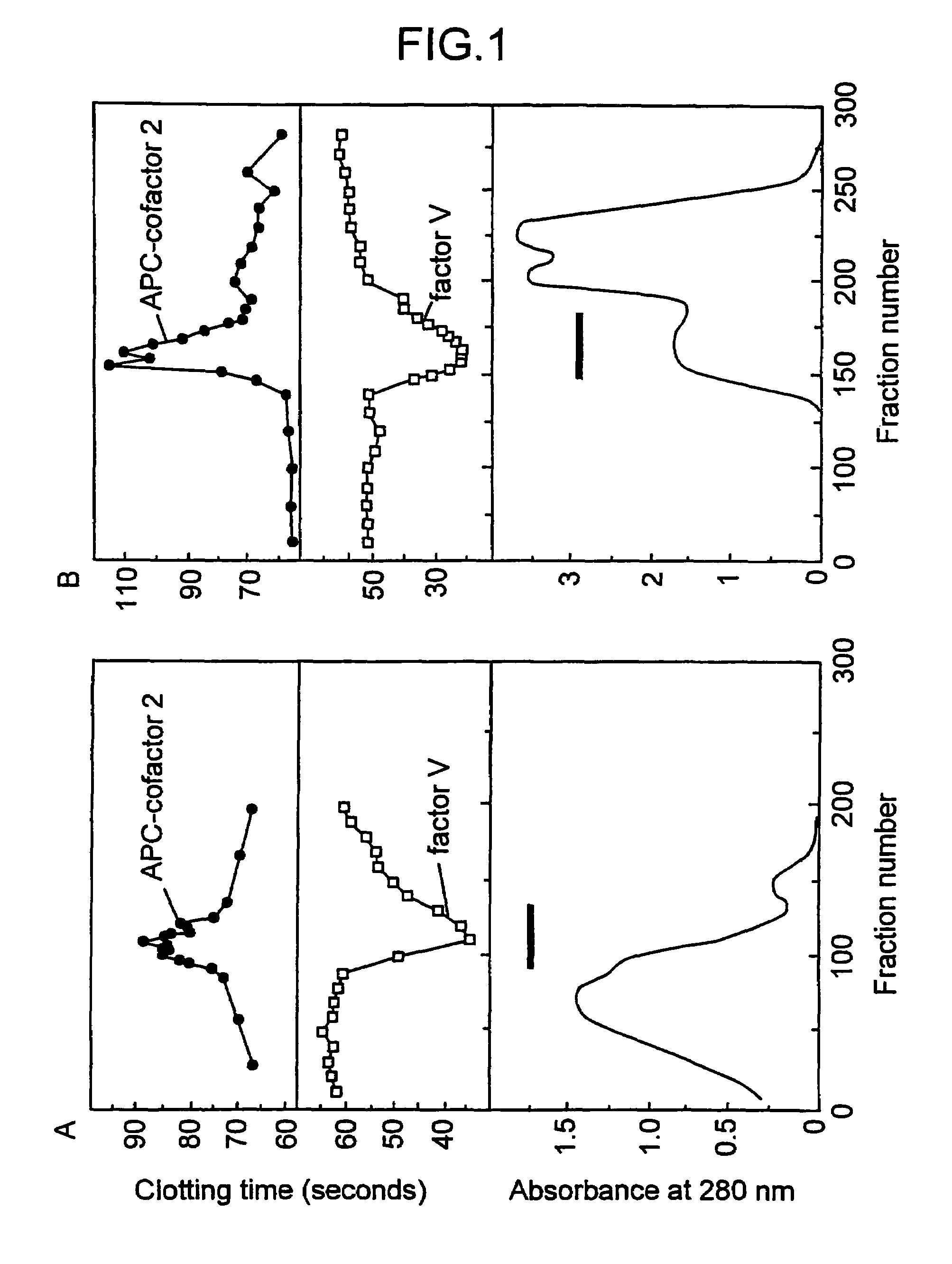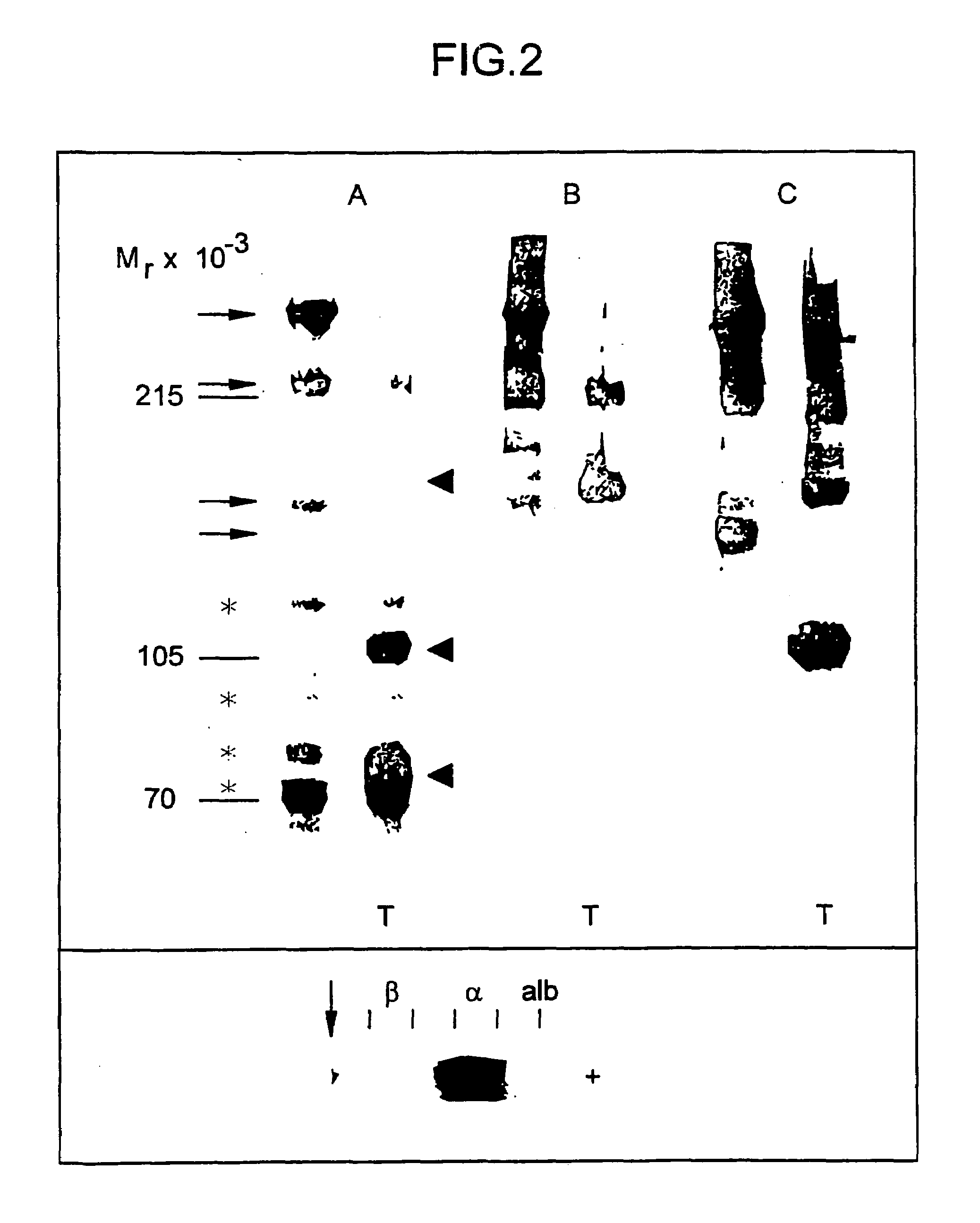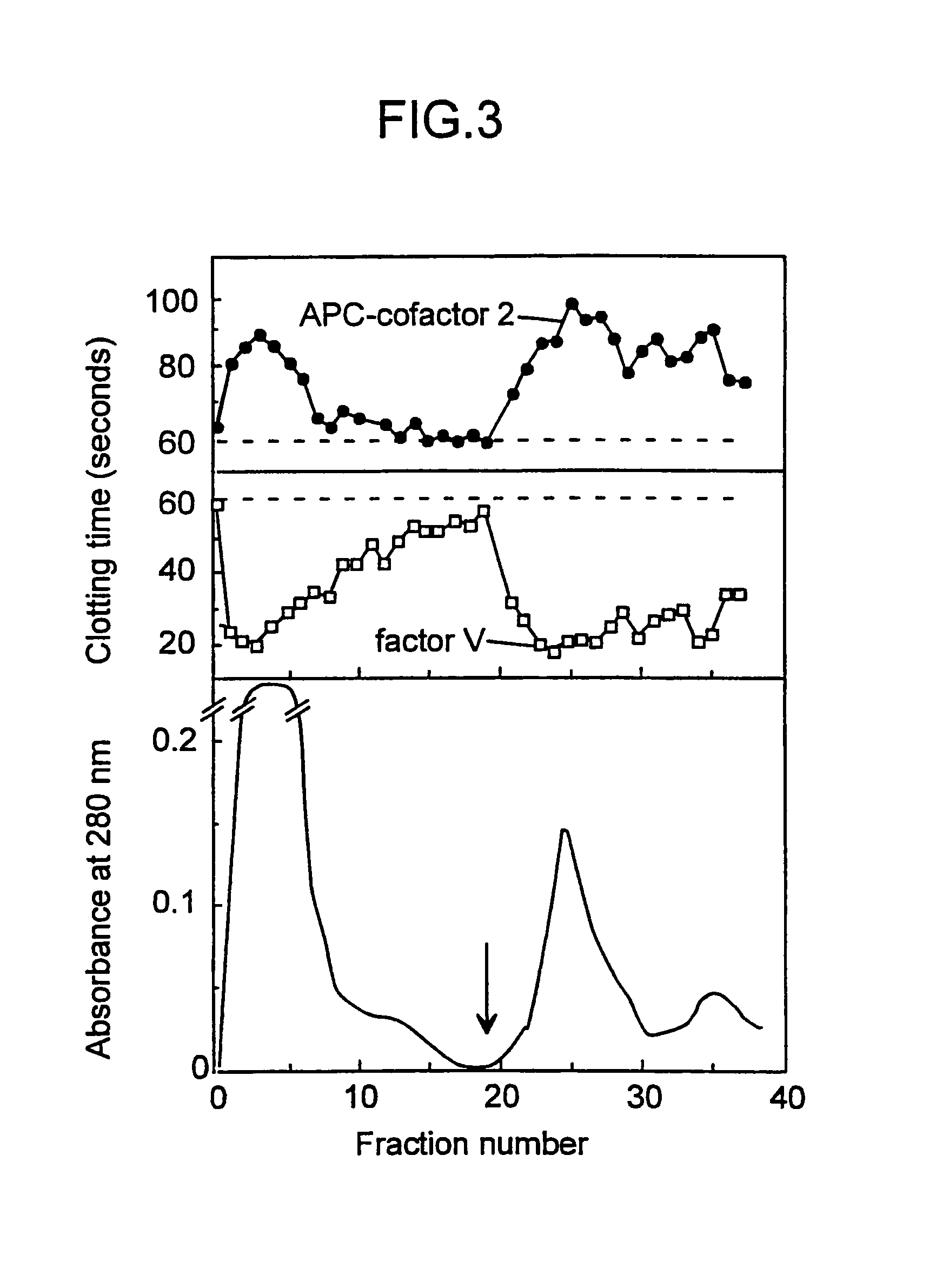Assays for determining anticoagulant cofactor activity
a cofactor activity and anticoagulant technology, applied in the field of blood coagulation disorders, can solve problems such as bleeding or thromboembolic disorders
- Summary
- Abstract
- Description
- Claims
- Application Information
AI Technical Summary
Benefits of technology
Problems solved by technology
Method used
Image
Examples
examples
Assay for APC-Cofactor 2 Activity:
[0093]A modification of the recently described APC-APTT method (PCT / SE / 9200781; and Dahlbäck et al., Proc. Natl. Acad. Sci. USA, 90 (1993) 1004–1008) was developed to measure APC-cofactor 2 activity during its purification. The method used plasma from an individual which had an inherited poor response to APC and fractions obtained from normal plasma which were tested for their ability to normalize the poor APC response. The assay which will be referred to as APC-cofactor 2 activity assay was performed as follows: 50 μl plasma demonstrating a poor response to APC (referred to as APC-resistant plasma) was incubated with 50 μl of the test fraction and 50 μl of an activated thromboplastin time (APTT) reagent (APTT-automated Organon Technica (USA)) for 5 minutes at 37° C. before coagulation was initiated by the addition of 5 μl of an APC-CaCl2 mixture (if not indicated otherwise, 20 nM human APC in 10 mM Tris-HCl, 0.05 M NaCl, 30 mM CaCl2, pH 7.5, contai...
PUM
| Property | Measurement | Unit |
|---|---|---|
| temperatures | aaaaa | aaaaa |
| pH | aaaaa | aaaaa |
| diameter | aaaaa | aaaaa |
Abstract
Description
Claims
Application Information
 Login to View More
Login to View More - R&D
- Intellectual Property
- Life Sciences
- Materials
- Tech Scout
- Unparalleled Data Quality
- Higher Quality Content
- 60% Fewer Hallucinations
Browse by: Latest US Patents, China's latest patents, Technical Efficacy Thesaurus, Application Domain, Technology Topic, Popular Technical Reports.
© 2025 PatSnap. All rights reserved.Legal|Privacy policy|Modern Slavery Act Transparency Statement|Sitemap|About US| Contact US: help@patsnap.com



